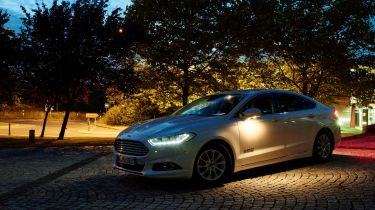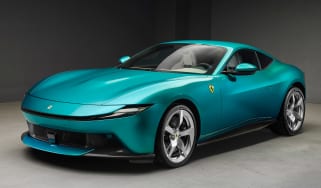New Ford headlight tech puts cyclists and pedestrians in the spotlight
Ford has revealed it is working on new camera-based headlight system, and advanced nitroxen oxide cabin filter

Ford is hard at work developing some advanced technology that will be available across its model range soon. This includes a new adaptive lighting system that uses cameras to react to hazards, and an air filter that removes almost all nitrogen oxide from the car's cabin.
An adaptation of the Blue Oval's current Adaptive Front Lighting System, infrared cameras are installed that let the lights widen their beam at junctions and roundabouts. This allows drivers to spot upcoming hazards that aren't in the main direction of travel, such as pedestrians, cyclists or stray animals. The system can also use GPS and Traffic Sign Recognition to prepare the lights for upcoming hazardous road sections.
Ken Washington, VP of Research and Advanced Engineering, says that drivers at night have to be able to "quickly react to someone or something suddenly appearing in the road – as if from nowhere".
Further to this, the research team is working on systems including Spot Lighting, which can actively track up to eight moving objects or people and alert the driver if they present a danger. LEDs in the foglamps can then mark out the hazards by illuminating it with a spotlight. A screen inside the car can mark the objects out on the road, up to 390 feet away.
Aside from this new lighting tech, the firm is also rolling out a new active particulate cabin filter that keeps out more than just pollen. Debuting on the latest Mondeo, Galaxy and S-MAX, the system detects carbon monoxide and nitrogen oxide (key triggers of respatory problems) levels outside and, if required, automatically directs air through an 'activated charcoal' filter that's 50 per cent more effective than before.
What do you think of Ford's new headlight tech? Let us know in the comments section below...
Find a car with the experts






